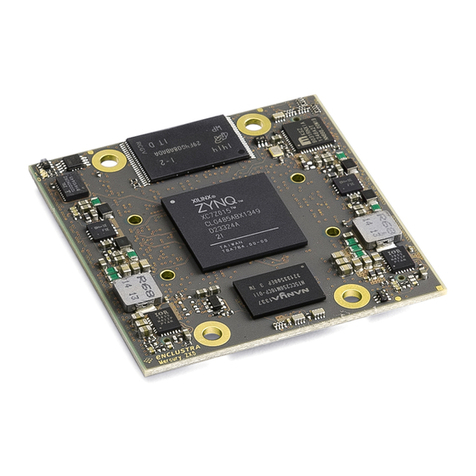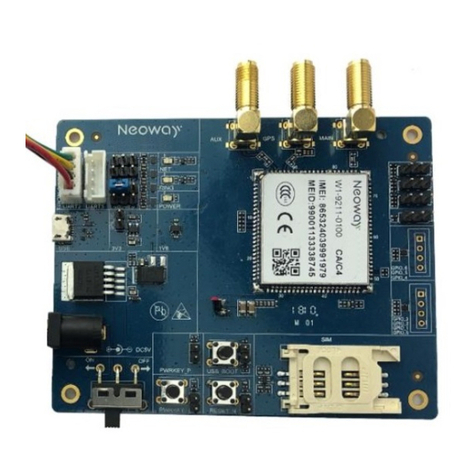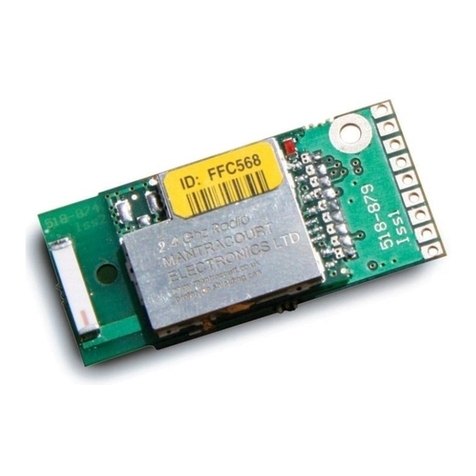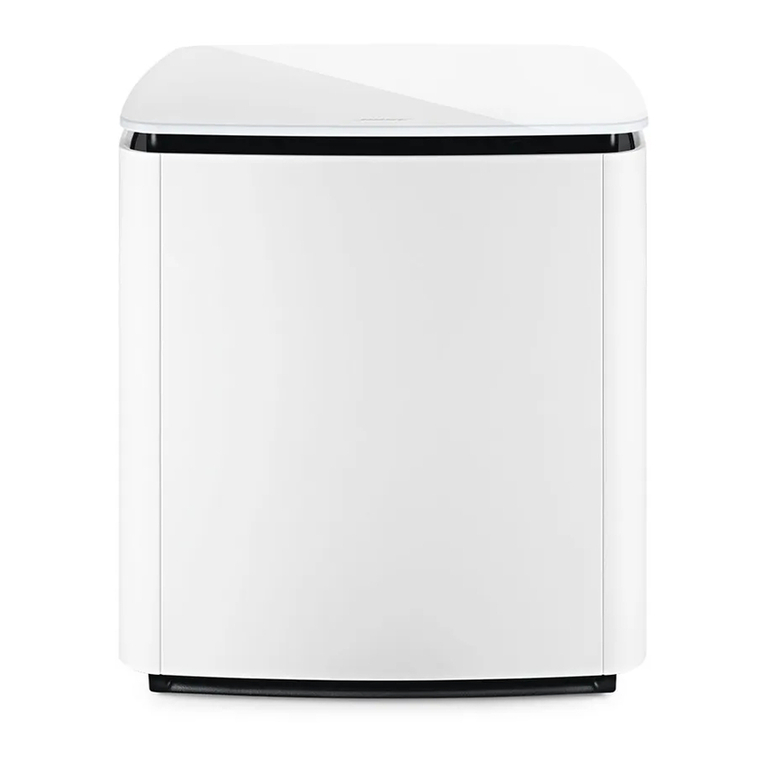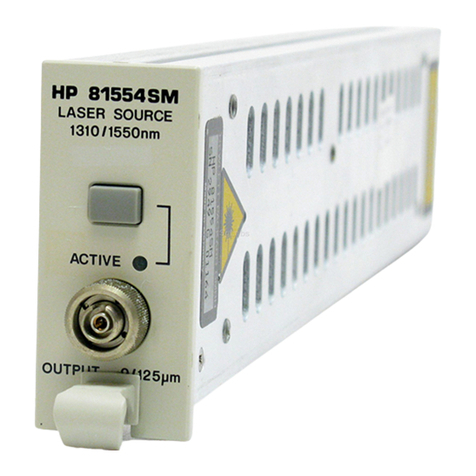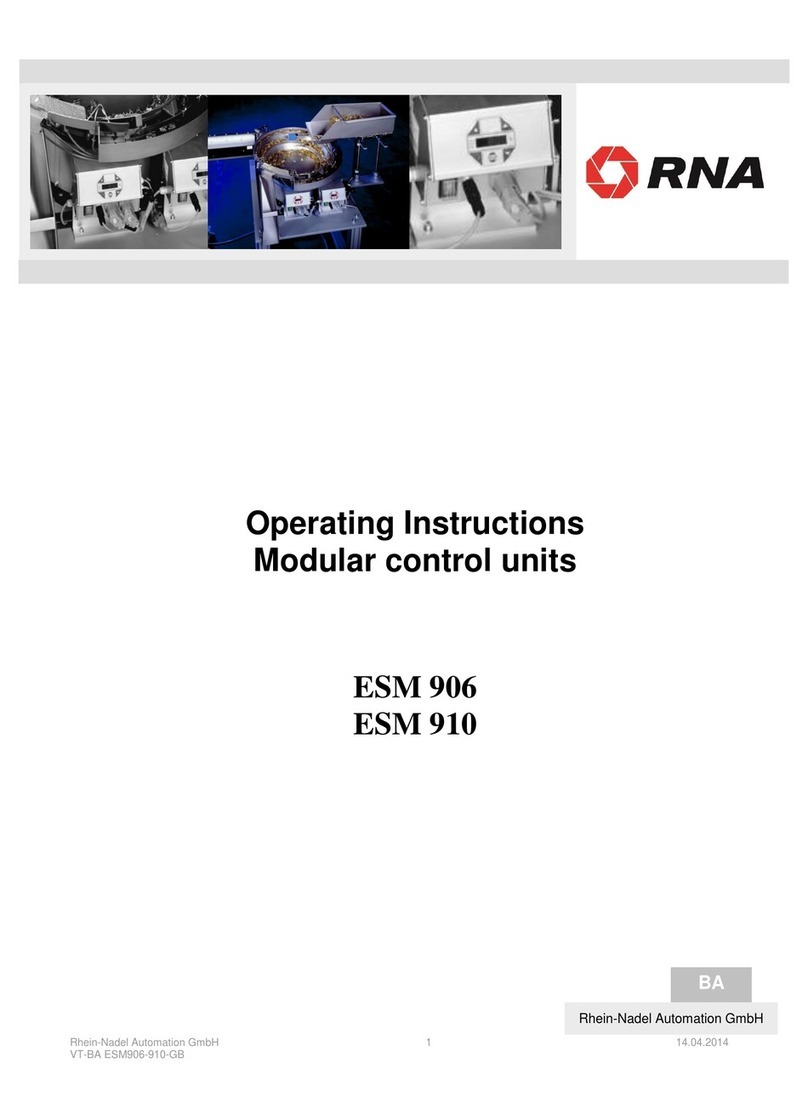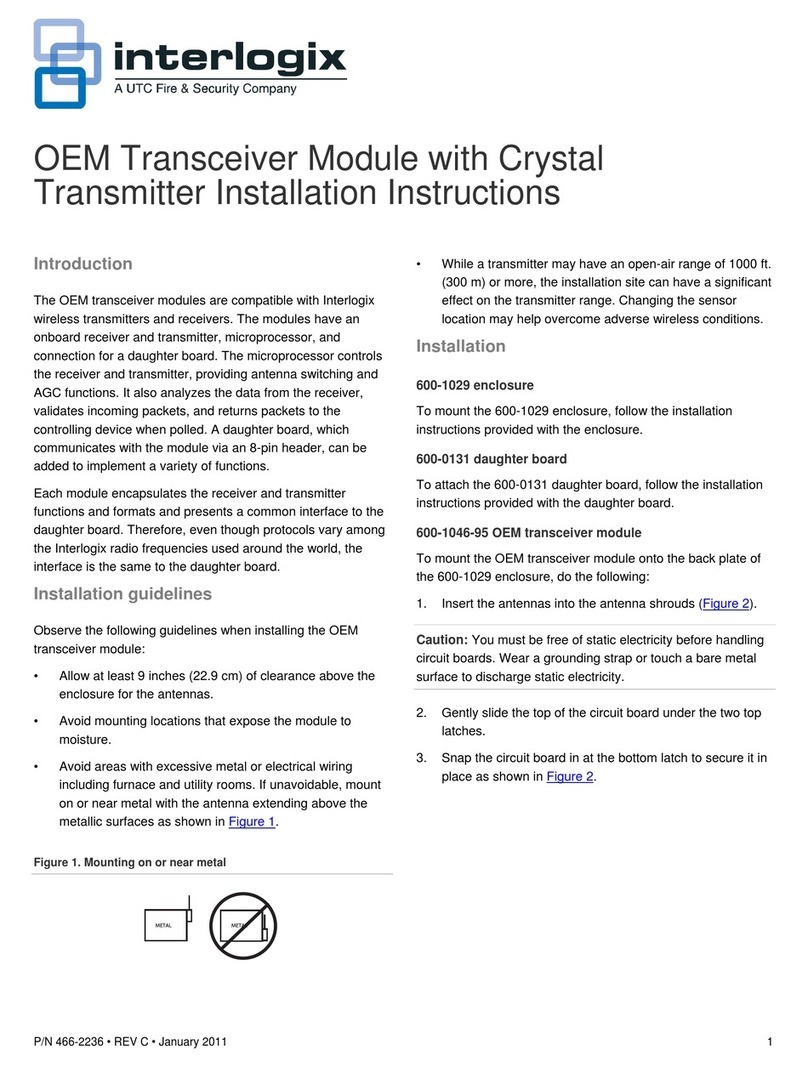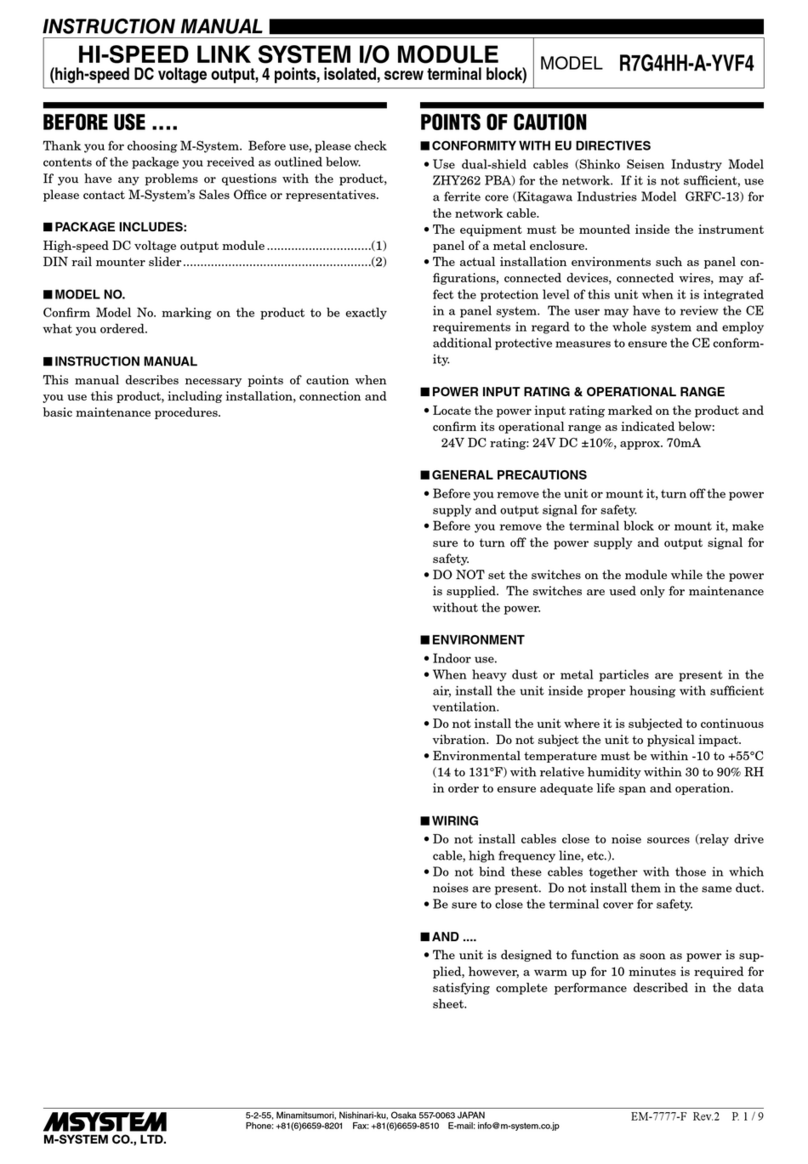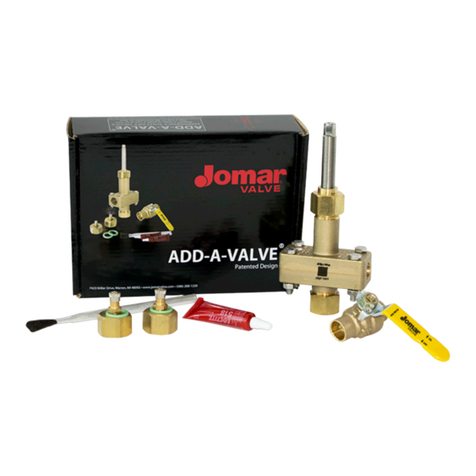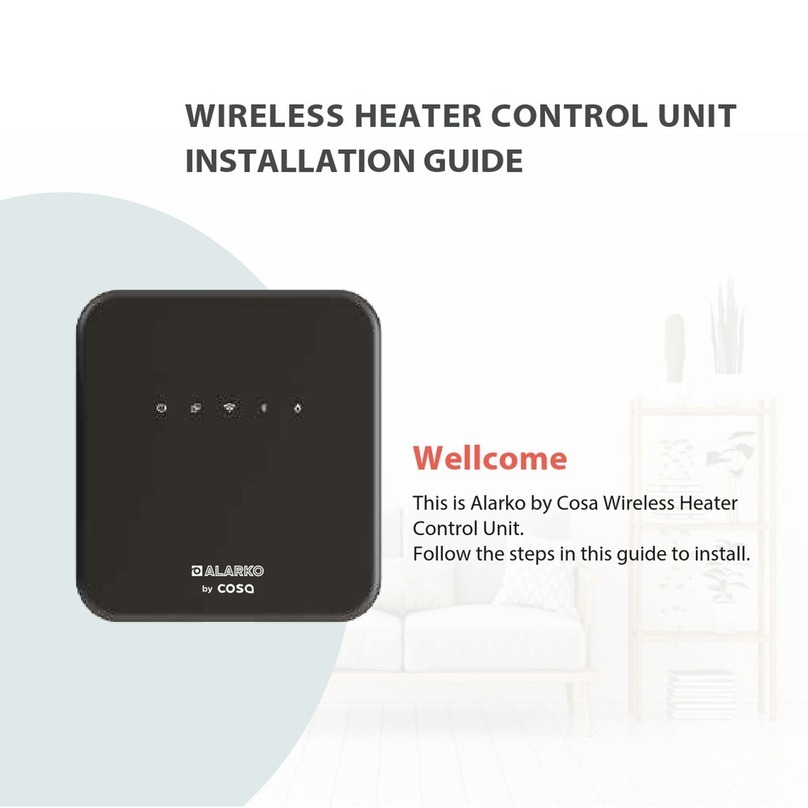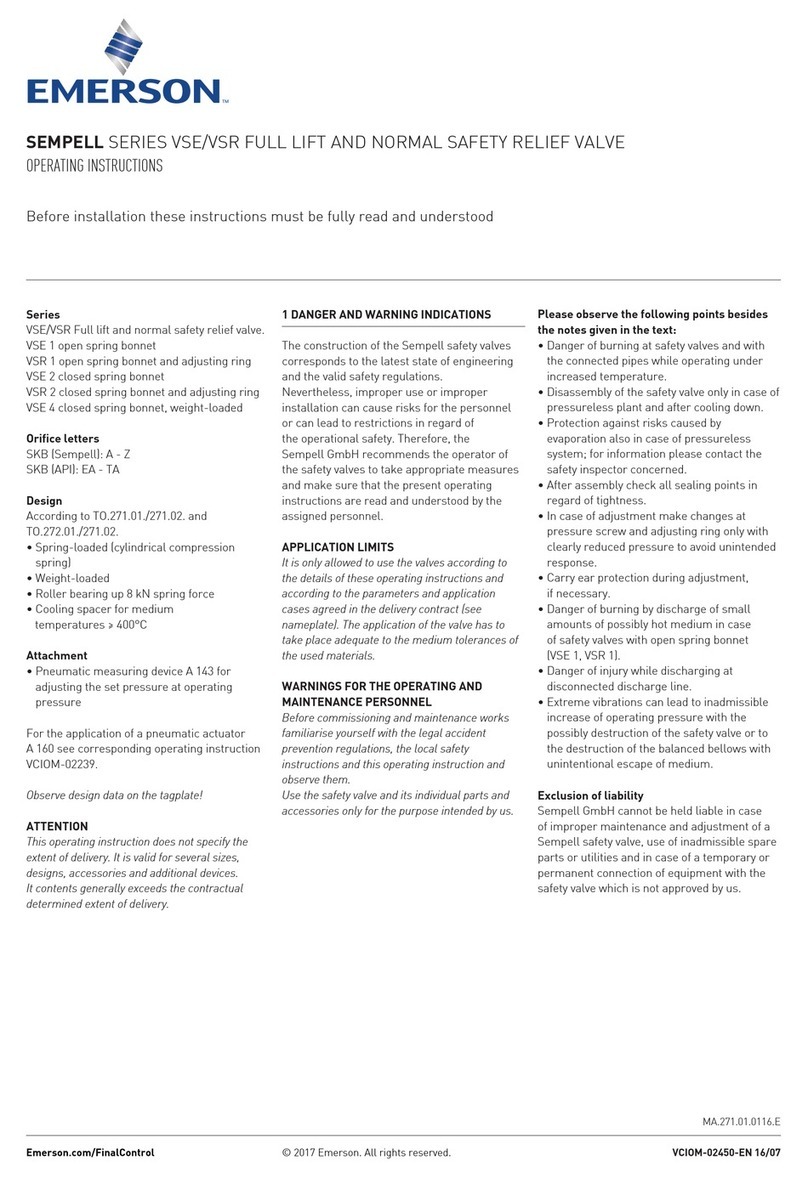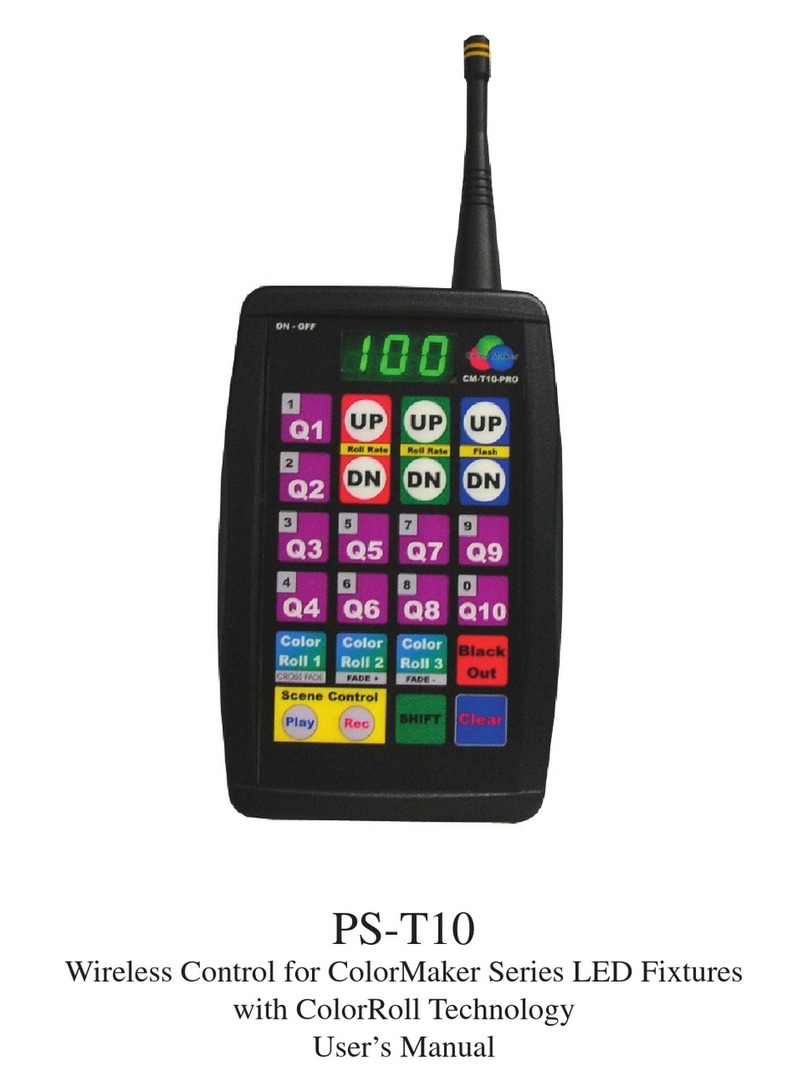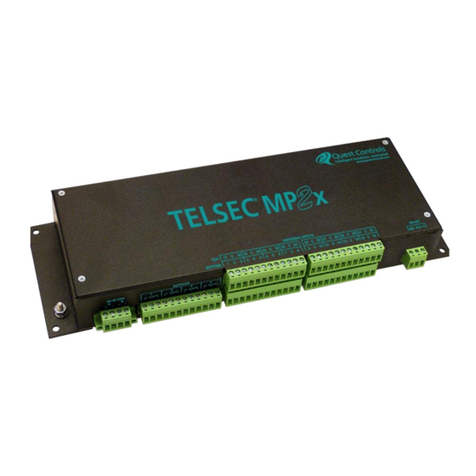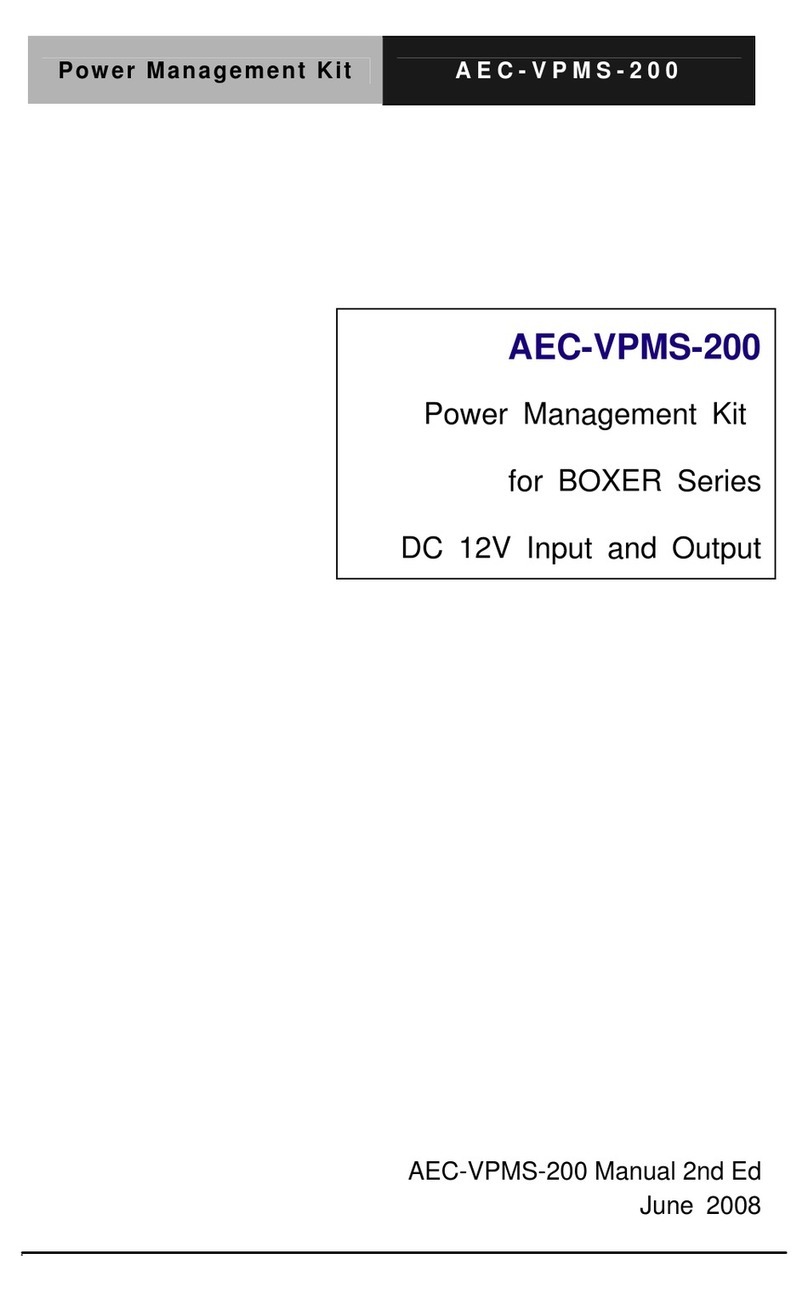DEEP SEA ELECTRONICS DSEGenset DSE6110 MKIII User manual

057-289 ISSUE: 1
DEEPS SEA ELECTRONICS Ltd
DSE6110 MKIII & DSE6120 MKIII
Operator Manual
Document Number: 057-289
Author: Matt Simpson

DSE6110 MKIII & DSE6120 MKIII Operator Manual
057-289 ISSUE: 1
Page 2 of 148
Deeps Sea Electronics Ltd
Highfield House
Hunmanby
North Yorkshire
YO14 0PH
ENGLAND
Sales Tel: +44 (0) 1723 890099
Sales Fax: +44 (0) 1723 893303
E-mail: sales@deepseaplc.com
Website: www.deepseaplc.com
DSE6110 MKIII & DSE6120 MKIII Operator Manual
© Deeps Sea Electronics Ltd
All rights reserved. No part of this publication may be reproduced in any material form (including
photocopying or storing in any medium by electronic means or other) without the written permission of
the copyright holder except in accordance with the provisions of the Copyright, Designs and Patents
Act 1988.
Applications for the copyright holder’s written permission to reproduce any part of this publication
must be addressed to Deeps Sea Electronics Ltd at the address above.
The DSE logo and the names DSEGenset®, DSEAts®, DSEControl® and DSEPower®are UK
registered trademarks of Deeps Sea Electronics Ltd.
Any reference to trademarked product names used within this publication is owned by their respective
companies.
Deeps Sea Electronics Ltd reserves the right to change the contents of this document without prior
notice.
Amendments Since Last Publication
Amd. No.
Comments
1
Initial Release

DSE6110 MKIII & DSE6120 MKIII Operator Manual
Page 3 of 148
057-289 ISSUE: 1
TABLE OF CONTENTS
Section
Page
1INTRODUCTION..................................................................................................7
1.1 CLARIFICATION OF NOTATION............................................................................................8
1.2 GLOSSARY OF TERMS..........................................................................................................8
1.3 BIBLIOGRAPHY ....................................................................................................................10
1.3.1 INSTALLATION INSTRUCTIONS...................................................................................10
1.3.2 MANUALS.......................................................................................................................10
1.3.3 TRAINING GUIDES ........................................................................................................11
1.3.4 THIRD PARTY DOCUMENTS........................................................................................11
2SPECIFICATION................................................................................................12
2.1 STORAGE TEMPERATURE .................................................................................................12
2.2 OPERATING TEMPERATURE..............................................................................................12
2.3 REQUIREMENTS FOR UL ....................................................................................................12
2.4 TERMINAL SPECIFICATION ................................................................................................13
2.5 POWER SUPPLY REQUIREMENTS.....................................................................................13
2.5.1 MODULE SUPPLY INSTRUMENTATION DISPLAY......................................................13
2.6 VOLTAGE & FREQUENCY SENSING..................................................................................14
2.7 CURRENT SENSING.............................................................................................................14
2.7.1 VA RATING OF THE CTS...............................................................................................15
2.7.2 CT POLARITY.................................................................................................................16
2.7.3 CT PHASING...................................................................................................................16
2.7.4 CT CLASS.......................................................................................................................16
2.8 INPUTS...................................................................................................................................17
2.8.1 DIGITAL INPUTS ............................................................................................................17
2.8.2 EMERGENCY STOP ......................................................................................................17
2.8.3 ANALOGUE INPUTS ......................................................................................................18
2.8.3.1 ANALOGUE INPUT A..............................................................................................18
2.8.3.2 ANALOGUE INPUT B & C.......................................................................................19
2.8.3.3 ANALOGUE INPUT D..............................................................................................20
2.8.4 CHARGE FAIL INPUT.....................................................................................................21
2.8.5 MAGNETIC PICK-UP......................................................................................................21
2.9 OUTPUTS...............................................................................................................................22
2.9.1 DC OUTPUTS A & B (FUEL & START)..........................................................................22
2.9.2 CONFIGURABLE DC OUTPUTS C, D, E, F, G, H .........................................................22
2.10 COMMUNICATION PORTS ...............................................................................................23
2.11 COMMUNICATION PORT USAGE....................................................................................24
2.11.1 USB SLAVE PORT (PC CONFIGURATION)..................................................................24
2.11.2 ECU PORT (J1939).........................................................................................................25
2.11.3 J1939-75..........................................................................................................................26
2.11.4 DSENET®(EXPANSION MODULES).............................................................................27
2.12 ADDING AN EXTERNAL SOUNDER ................................................................................28
2.13 ACCUMULATED INSTRUMENTATION............................................................................30
2.14 DIMENSIONS AND MOUNTING........................................................................................31
2.14.1 DIMENSIONS..................................................................................................................31
2.14.2 PANEL CUTOUT.............................................................................................................31
2.14.3 WEIGHT..........................................................................................................................31
2.14.4 FIXING CLIPS.................................................................................................................32
2.14.5 CABLE TIE FIXING POINTS...........................................................................................33
2.14.6 SILICON SEALING GASKET..........................................................................................33
2.15 APPLICABLE STANDARDS .............................................................................................34
2.15.1 ENCLOSURE CLASSIFICATIONS.................................................................................36
2.15.1.1 IP CLASSIFICATIONS.............................................................................................36
2.15.1.2 NEMA CLASSIFICATIONS......................................................................................36
3INSTALLATION.................................................................................................37
3.1 USER CONNECTIONS..........................................................................................................37

DSE6110 MKIII & DSE6120 MKIII Operator Manual
057-289 ISSUE: 1
Page 4 of 148
3.2 CONNECTION DESCRIPTIONS ...........................................................................................38
3.2.1 DC SUPPLY, E-STOP INPUT, DC OUTPUTS & CHARGE FAIL INPUT.......................38
3.2.2 ANALOGUE SENSOR INPUTS, MPU & ECU................................................................39
3.2.3 DSENET..........................................................................................................................40
3.2.4 V1 (GENERATOR) & V2 (MAINS) VOLTAGE & FREQUENCY SENSING....................40
3.2.5 CURRENT TRANSFORMERS........................................................................................41
3.2.5.1 CT CONNECTIONS.................................................................................................41
3.2.6 DIGITAL INPUTS ............................................................................................................42
3.2.7 USB SLAVE (PC CONFIGURATION) CONNECTOR ....................................................43
3.3 TYPICAL WIRING DIAGRAM................................................................................................44
3.3.1 DSE61XX MKIII 3 PHASE 4 WIRE.................................................................................45
3.3.2 DSE61XX MKIII SINGLE PHASE 2 WIRE......................................................................46
3.3.4 DSE61XX MKIII 2 PHASE 3 WIRE (L1 - L2) ..................................................................48
3.3.5 DSE61XX MKIII 2 PHASE 3 WIRE (L1 –L3)..................................................................49
3.3.6 EARTH SYSTEMS..........................................................................................................50
3.3.6.1 NEGATIVE EARTH..................................................................................................50
3.3.6.2 POSITIVE EARTH ...................................................................................................50
3.3.6.3 FLOATING EARTH..................................................................................................50
3.3.7 TYPICAL ARRANGEMENT OF DSENET®.....................................................................51
4DESCRIPTION OF CONTROLS........................................................................52
4.1 DSE6110 MKIII.......................................................................................................................53
4.2 DSE6120 MKIII.......................................................................................................................54
4.3 CONTROL PUSH BUTTONS ................................................................................................55
4.4 VIEWING THE INSTRUMENT PAGES..................................................................................58
4.4.1 STATUS ..........................................................................................................................59
4.4.1.1 GENERATOR LOCKED OUT..................................................................................59
4.4.1.2 WAITING FOR GENERATOR .................................................................................59
4.4.2 ENGINE...........................................................................................................................60
4.4.2.1 MANUAL FUEL PUMP CONTROL..........................................................................61
4.4.2.2 DPF REGENERATION LAMPS...............................................................................62
4.4.3 GENERATOR..................................................................................................................63
4.4.4 EXPANSION....................................................................................................................64
4.4.5 CHARGER ID..................................................................................................................65
4.4.6 ALARMS..........................................................................................................................66
4.4.6.1 ECU ALARMS (CAN FAULT CODES / DTC)..........................................................67
4.4.7 EVENT LOG....................................................................................................................68
4.4.7.1 PROTECTIONS DISABLED ....................................................................................69
4.4.8 CONFIGURABLE CAN ...................................................................................................69
4.4.9 ABOUT............................................................................................................................70
5OPERATION......................................................................................................71
5.1 QUICKSTART GUIDE............................................................................................................71
5.1.1 STARTING THE ENGINE...............................................................................................71
5.1.2 STOPPING THE ENGINE...............................................................................................72
5.2 STOP/RESET MODE.............................................................................................................73
5.2.1 ECU OVERRIDE.............................................................................................................73
5.3 MANUAL MODE ....................................................................................................................74
5.3.1 STARTING SEQUENCE.................................................................................................74
5.3.2 ENGINE RUNNING.........................................................................................................75
5.3.2.1 MANUAL BREAKER CONTROL DISABLED ..........................................................75
5.3.2.2 MANUAL BREAKER CONTROL ENABLED ...........................................................76
5.3.3 STOPPING SEQUENCE.................................................................................................76
5.4 TEST MODE...........................................................................................................................77
5.4.1 STARTING SEQUENCE.................................................................................................77
5.4.2 ENGINE RUNNING.........................................................................................................78
5.4.3 STOPPING SEQUENCE.................................................................................................78
5.5 AUTOMATIC MODE ..............................................................................................................79
5.5.1 WAITING IN AUTO MODE..............................................................................................79
5.5.2 STARTING SEQUENCE.................................................................................................80
5.5.3 ENGINE RUNNING.........................................................................................................81

DSE6110 MKIII & DSE6120 MKIII Operator Manual
Page 5 of 148
057-289 ISSUE: 1
5.5.4 STOPPING SEQUENCE.................................................................................................81
5.6 SCHEDULER .........................................................................................................................82
5.6.1 STOP MODE...................................................................................................................82
5.6.2 MANUAL MODE..............................................................................................................82
5.6.3 AUTO MODE...................................................................................................................82
5.8 ALTERNATIVE CONFIGURATIONS.....................................................................................83
6PROTECTIONS .................................................................................................84
6.1 ALARMS ................................................................................................................................84
6.1.1 PROTECTIONS DISABLED............................................................................................85
6.1.2 RESET ELECTRICAL TRIP............................................................................................86
6.1.3 ECU ALARMS (CAN FAULT CODES / DTC) .................................................................87
6.2 WARNING ALARMS..............................................................................................................88
6.3 ELECTRICAL TRIP ALARMS...............................................................................................94
6.4 SHUTDOWN ALARMS..........................................................................................................99
6.5 MAINTENANCE ALARMS...................................................................................................106
6.6 OVER CURRENT ALARM...................................................................................................108
6.6.1 IMMEDIATE WARNING................................................................................................108
6.6.2 INVERSE DEFINITE MINIMUM TIME (IDMT) ALARM.................................................109
6.6.2.1 CREATING A SPREADSHEET FOR THE OVER CURRENT IDMT CURVE.......110
6.7 SHORT CIRCUIT IDMT ALARM..........................................................................................112
6.7.1 CREATING A SPREADSHEET FOR THE SHORT CIRCUIT IDMT CURVE...............113
6.8 DEFAULT CURRENT PROTECTION TRIPPING CHARACTERISTICS............................116
7FRONT PANEL CONFIGURATION.................................................................118
7.1 MAIN CONFIGURATION EDTIOR ......................................................................................119
7.1.1 ACCESSING THE MAIN CONFIGURATION EDTIOR.................................................119
7.1.2 ENTERING PIN.............................................................................................................119
7.1.3 EDITING A PARAMETER.............................................................................................120
7.1.4 EXITING THE MAIN CONFIGURATION EDITOR........................................................120
7.1.5 ADJUSTABLE PARAMETERS .....................................................................................121
7.2 ‘‘RUNNING’ CONFIGURATION EDITOR............................................................................129
7.2.1 ACCESSING THE ‘RUNNING’ CONFIGURATION EDITOR .......................................129
7.2.2 ENTERING PIN.............................................................................................................129
7.2.3 EDITING A PARAMETER.............................................................................................129
7.2.4 EXITING THE ‘RUNNING’ CONFIGURATION EDITOR ..............................................130
7.2.5 RUNNING EDITOR PARAMETERS.............................................................................130
8COMMISIONING..............................................................................................131
8.1 BASIC CHECKS ..................................................................................................................131
9CAN INTERFACE SPECIFICATION ( J1939-75 )...........................................132
9.1 INSTRUMENTATION AND CONTROL...............................................................................132
9.1.1 BROADCAST MESSAGES J1939-75...........................................................................132
9.1.1.1 ACS –AC SWITCHING DEVICE STATUS ...........................................................133
9.1.1.2 GC1 –GENERATOR CONTROL 1 .......................................................................133
9.1.1.3 GAAC - GENERATOR AVERAGE BASIC AC QUANTITIES................................134
9.1.1.4 GPAAC - GENERATOR PHASE A BASIC AC QUANTITIES...............................134
9.1.1.5 GPAACP - GENERATOR PHASE A AC POWER.................................................134
9.1.1.6 GPAACR - GENERATOR PHASE A AC REACTIVE POWER .............................135
9.1.1.7 GPBAC - GENERATOR PHASE B BASIC AC QUANTITIES...............................135
9.1.1.8 GPBACP - GENERATOR PHASE B AC POWER.................................................135
9.1.1.9 GPBACR - GENERATOR PHASE B AC REACTIVE POWER .............................136
9.1.1.10 GPCAC - GENERATOR PHASE C BASIC AC QUANTITIES...............................136
9.1.1.11 GPCACP - GENERATOR PHASE C AC POWER ................................................136
9.1.1.12 GPCACR - GENERATOR PHASE C AC REACTIVE POWER.............................137
9.1.1.13 GTACPP - GENERATOR TOTAL AC PERCENT POWER...................................137
9.1.1.14 GTACE - GENERATOR TOTAL KW HOURS EXPORT .......................................137
9.1.1.15 GTACER - GENERATOR TOTAL AC REACTIVE ENERGY................................137
9.1.1.16 GTACP - GENERATOR TOTAL AC POWER .......................................................138
9.1.1.17 GTACR - GENERATOR TOTAL AC REACTIVE POWER....................................138

DSE6110 MKIII & DSE6120 MKIII Operator Manual
057-289 ISSUE: 1
Page 6 of 148
9.1.2 BROADCAST MESSAGES ENGINE INSTRUMENTATION........................................138
9.1.2.1 DD –DASH DISPLAY............................................................................................138
9.1.2.2 EC2 - ENGINE CONFIGURATION 2.....................................................................139
9.1.2.3 EEC1- ENGINE SPEED.........................................................................................139
9.1.2.4 EEC4 - CRANK ATTEMPT COUNT ON PRESENT START ATTEMPT...............139
9.1.2.5 EFL_P1 - OIL PRESSURE ....................................................................................139
9.1.2.6 EOI - EMERGENCY STOP....................................................................................140
9.1.2.7 ET1 - COOLANT TEMPERATURE........................................................................140
9.1.2.8 HOURS - ENGINE HOURS REVOLUTIONS........................................................140
9.1.2.9 VEP1 - VEHICLE ELECTRICAL POWER .............................................................140
9.1.2.10 DM01 - CONDITIONS ACTIVE DIAGNOSTIC TROUBLE CODES......................141
10 FAULT FINDING...........................................................................................142
10.1 STARTING........................................................................................................................142
10.2 LOADING..........................................................................................................................142
10.3 ALARMS...........................................................................................................................143
10.4 COMMUNICATIONS ........................................................................................................143
10.5 INSTRUMENTS................................................................................................................143
11 MAINTENANCE, SPARES, REPAIR AND SERVICING ..............................144
11.1 PURCHASING ADDITIONAL CONNECTOR PLUGS FROM DSE.................................144
11.1.1 PACK OF PLUGS .........................................................................................................144
11.1.2 INDIVIDUAL PLUGS.....................................................................................................144
11.2 PURCHASING ADDITIONAL FIXING CLIPS FROM DSE..............................................144
11.3 PURCHASING ADDITIONAL SEALING GASKET FROM DSE .....................................144
11.4 DSENET®EXPANSION MODULES ................................................................................145
12 WARRANTY .................................................................................................146
13 DISPOSAL....................................................................................................146
13.1 WEEE (WASTE ELECTRICAL AND ELECTRONIC EQUIPMENT)...............................146

Introduction
Page 7 of 148
057-289 ISSUE: 1
1 INTRODUCTION
This document details the installation and operation requirements of the DSE6110 MKIII & DSE6120
MKIII module and is part of the DSEGenset® range of products.
The manual forms part of the product and should be kept for the entire life of the product. If the
product is passed or supplied to another party, ensure that this document is passed to them for
reference purposes.
This is not a controlled document. DSE do not automatically inform on updates. Any future updates of
this document are included on the DSE website at www.deepseaplc.com
The DSE6110 MKIII & DSE6120 MKIII series is designed to provide differing levels of functionality
across a common platform. This allows the generator OEM greater flexibility in the choice of controller
to use for a specific application.
The DSE6110 MKIII series module has been designed to allow the operator to start and stop the
generator, and if required, transfer the load to the generator either manually or automatically.
Additionally, the DSE6120 MKIII automatically starts and stops the generator set depending upon the
status of the mains (utility) supply.
The user also has the facility to view the system operating parameters via the text LCD display.
The DSE6110 MKIII & DSE6120 MKIII module monitors the engine, indicating the operational status
and fault conditions, automatically shutting down the engine and giving a true first up fault condition of
an engine failure by the text LCD display.
The powerful ARM microprocessor contained within the module allows for incorporation of a range of
complex features:
•Text based LCD display
•True RMS Voltage
•Current and Power monitoring
•USB Communications
•Engine parameter monitoring.
•Fully configurable inputs for use as alarms or a range of different functions.
•Engine ECU interface to electronic engines including Tier 5 engines.
•Integral PLC to help provide customisation where required
•Fuel tank level monitoring to track fuel filling operations and detect fuel leak/theft
•Data Logging
The DSE Configuration Suite PC Software allows alteration of selected operational sequences,
timers, alarms and operational sequences. Additionally, the module’s integral front panel configuration
editor allows adjustment of this information.
Access to critical operational sequences and timers for use by qualified engineers, can be protected
by a security code. Module access can also be protected by PIN code. Selected parameters can be
changed from the module’s front panel.
The module is housed in a robust plastic case suitable for panel mounting. Connections to the module
are via locking plug and sockets.

Introduction
057-289 ISSUE: 1
Page 8 of 148
1.1 CLARIFICATION OF NOTATION
Clarification of notation used within this publication.
NOTE:
Highlights an essential element of a procedure to ensure correctness.
CAUTION!
Indicates a procedure or practice, which, if not strictly observed, could
result in damage or destruction of equipment.
WARNING!
Indicates a procedure or practice, which could result in injury to personnel
or loss of life if not followed correctly.
1.2 GLOSSARY OF TERMS
Term
Description
DSE61XX
All modules in the DSE6110 MKIII & DSE6120 MKIII range.
CAN
Controller Area Network
Vehicle standard to allow digital devices to communicate to one another.
CDMA
Code Division Multiple Access.
Cell phone access used in small number of areas including parts of the USA and
Australia.
CT
Current Transformer
An electrical device that takes a large AC current and scales it down by a fixed
ratio to a smaller current.
BMS
Building Management System
A digital/computer based control system for a building’s infrastructure.
DEF
Diesel Exhaust Fluid (AdBlue)
A liquid used as a consumable in the SCR process to lower nitric oxide and
nitrogen dioxide concentration in engine exhaust emissions.
DM1
Diagnostic Message 1
A DTC that is currently active on the engine ECU.
DM2
Diagnostic Message 2
A DTC that was previously active on the engine ECU and has been stored in the
ECU’s internal memory.
DPF
Diesel Particulate Filter
A filter fitted to the exhaust of an engine to remove diesel particulate matter or soot
from the exhaust gas.
DPTC
Diesel Particulate Temperature Controlled Filter
A filter fitted to the exhaust of an engine to remove diesel particulate matter or soot
from the exhaust gas which is temperature controlled.
DTC
Diagnostic Trouble Code
The name for the entire fault code sent by an engine ECU.
ECU/ECM
Engine Control Unit/Management
An electronic device that monitors engine parameters and regulates the fuelling.
FMI
Failure Mode Indicator
A part of DTC that indicates the type of failure, e.g. high, low, open circuit etc.
J1939
Society of Automotive Engineers (SAE) J1939 standard is the vehicle bus
recommended practice for communication and diagnostics among vehicle
components.
J1939 –75
Sub section of J1939 standard. The parameters and parameter groups contained
in this sub section are predominantly associated with generators and driven
equipment in electric power generation and industrial applications.
Continued over page…

Introduction
Page 9 of 148
057-289 ISSUE: 1
Term
Description
GSM
Global System for Mobile communications. Cell phone technology used in most of
the World.
HEST
High Exhaust System Temperature
Initiates when DPF filter is full in conjunction with an extra fuel injector in the
exhaust system to burn off accumulated diesel particulate matter or soot.
HMI
Human Machine Interface
A device that provides a control and visualisation interface between a human and a
process or machine.
IDMT
Inverse Definite Minimum Time
MSC
Multi-Set Communication
OC
Occurrence Count
A part of DTC that indicates the number of times that failure has occurred.
PGN
Parameter Group Number
A CAN address for a set of parameters that relate to the same topic and share the
same transmission rate.
PLC
Programmable Logic Controller
A programmable digital device used to create logic for a specific purpose.
SCADA
Supervisory Control And Data Acquisition
A system that operates with coded signals over communication channels to
provide control and monitoring of remote equipment
SCR
Selective Catalytic Reduction
A process that uses DEF with the aid of a catalyst to convert nitric oxide and
nitrogen dioxide into nitrogen and water to reduce engine exhaust emission.
SIM
Subscriber Identity Module.
The small card supplied by the GSM/CDMA provider that is inserted into the cell
phone, GSM modem or DSEGateway device to give GSM/GPRS connection.
SMS
Short Message Service
The text messaging service of mobile/cell phones.
SPN
Suspect Parameter Number
A part of DTC that indicates what the failure is, e.g. oil pressure, coolant
temperature, turbo pressure etc.

Introduction
057-289 ISSUE: 1
Page 10 of 148
1.3 BIBLIOGRAPHY
This document refers to, and is referred by the following DSE publications which are obtained from
the DSE website: www.deepseaplc.com or by contacting DSE technical support:
1.3.1 INSTALLATION INSTRUCTIONS
Installation instructions are supplied with the product in the box and are intended as a ‘quick start’
guide only.
DSE Part
Description
053-032
DSE2548 LED Expansion Annunciator Installation Instructions
053-033
DSE2130 Input Expansion Installation Instructions
053-034
DSE2157 Output Expansion Installation Instructions
053-049
DSE9xxx Battery Charger Installation Instructions
053-125
DSE2131 Ratiometric Input Expansion Installation Instructions
053-126
DSE2133 RTD/Thermocouple Input Expansion Installation Instructions
053-134
DSE2152 Analogue Output Expansion Installation Instructions
053-147
DSE9460 & DSE9461 Battery Charger Installation Instructions
053-240
DSE6110 MKIII and DSE6120 MKIII Installation Instructions
053-185
DSE9473 & DSE9483 Battery Charger Installation Instructions
1.3.2 MANUALS
Product manuals are obtained from the DSE website: www.deepseaplc.com or by contacting DSE
technical support: support@deepseaplc.com.
DSE Part
Description
N/A
DSEGencomm (MODBUS protocol for DSE controllers)
057-004
Electronic Engines and DSE Wiring Guide
057-082
DSE2130 Input Expansion Operator Manual
057-083
DSE2157 Output Expansion Operator Manual
057-084
DSE2548 Annunciator Expansion Operator Manual
057-085
DSE9xxx Battery Charger Operator Manual
057-139
DSE2131 Ratiometric Input Expansion Manual
057-140
DSE2133 RTD/Thermocouple Expansion Manual
057-141
DSE2152 Analogue Output Expansion Manual
057-151
DSE Configuration Suite PC Software Installation & Operation Manual
057-175
PLC Programming Guide For DSE Controllers
057-176
DSE9460 & DSE9461 Battery Charger Operator Manual
057-220
Options for Communications with DSE Controllers
057-290
DSE6110 MKIII and DSE6120 MKIII Software Manual

Introduction
Page 11 of 148
057-289 ISSUE: 1
1.3.3 TRAINING GUIDES
Training guides are provided as ‘hand-out’ sheets on specific subjects during training sessions and
contain specific information regarding to that subject.
DSE Part
Description
056-005
Using CTs With DSE Products
056-006
Introduction to Comms
056-010
Over Current Protection
056-019
Earth Fault Protection
056-022
Switchgear Control
056-023
Adding New CAN Files
056-026
kW, kvar, kVA and pf.
056-029
Smoke Limiting
056-030
Module PIN Codes
056-051
Sending DSEGencom Control Keys
056-053
Recommended Modems
056-055
Alternate Configurations
056-069
Firmware Update
056-075
Adding Language Files
056-076
Reading DSEGencom Alarms
056-079
Reading DSEGencom Status
056-080
MODBUS
056-091
Equipotential Earth Bonding
056-092
Recommended Practices for Wiring Resistive Sensors
056-095
Remote Start Input Functions
056-096
Engine Speed Control Over CAN for DSEGenset
056-097
USB Earth Loops and Isolation
056-099
Digital Output to Input Connection
1.3.4 THIRD PARTY DOCUMENTS
The following third party documents are also referred to:
Reference
Description
ISBN 1-55937-879-4
IEEE Std C37.2-1996 IEEE Standard Electrical Power System Device
Function Numbers and Contact Designations. Institute of Electrical and
Electronics Engineers Inc
ISBN 0-7506-1147-2
Diesel generator handbook. L.L.J. Mahon
ISBN 0-9625949-3-8
On-Site Power Generation. EGSA Education Committee.

Specification
057-289 ISSUE: 1
Page 12 of 148
2 SPECIFICATION
2.1 STORAGE TEMPERATURE
Module
Specification
DSE61XX MKIII
-40 ºC +85 ºC (-40 ºF +185 ºF )
2.2 OPERATING TEMPERATURE
Module
Specification
DSE61XX MKIII
-30 ºC +70 ºC (-22 ºF +158 ºF )
2.3 REQUIREMENTS FOR UL
WARNING!: More than one live circuit exists, refer to section entitled Typical Wiring
Diagram elsewhere in this document
Description
Specification
Screw Terminal
Tightening Torque
4.5 lb-in (0.5 Nm)
Conductors
Terminals suitable for connection of conductor size AWG 20 to AWG 13
(0.5 mm² to 2.5 mm²).
Conductor protection must be provided in accordance with NFPA 70,
Article 240
Low voltage circuits (35 V or less) must be supplied from the engine
starting battery or an isolated secondary circuit.
The communication, sensor, and/or battery derived circuit conductors
shall be separated and secured to maintain at least ¼” (6 mm) separation
from the generator and mains connected circuit conductors unless all
conductors are rated 600 V or greater.
Current Inputs
Must be connected through UL Listed or Recognized isolating current
transformers with the secondary rating of 5 A max.
Communication Circuits
Must be connected to communication circuits of UL Listed equipment
Output Pilot Duty
0.5 A
Mounting
Suitable for use in type 1 Enclosure Type rating with surrounding air
temperature -22 ºF to +158 ºF (-30 ºC to +70 ºC)
Suitable for pollution degree 3 environments when voltage sensing inputs
do not exceed 300 V. When used to monitor voltages over
300 V device to be installed in an unventilated or filtered ventilation
enclosure to maintain a pollution degree 2 environment.
Operating Temperature
-22 ºF to +158 ºF (-30 ºC to +70 ºC)
Storage Temperature
-40 ºF to +176 ºF (-40 ºC to +80 ºC)

Specification
Page 13 of 148
057-289 ISSUE: 1
2.4 TERMINAL SPECIFICATION
Description
Specification
Connection Type
Two part connector.
Male part fitted to module
Female part supplied in module
packing case - Screw terminal,
rising clamp, no internal spring.
Example showing cable entry and screw
terminals of a 10 way connector
Minimum Cable Size
0.5 mm² (AWG 20)
Maximum Cable Size
2.5 mm² (AWG 13)
Tightening Torque
0.5 Nm (4.5 lb-in)
Wire Strip Length
7 mm (9/32”)
2.5 POWER SUPPLY REQUIREMENTS
Description
Specification
Minimum Supply Voltage
8 V continuous, 5 V for up 1 minute
Cranking Dropouts
Able to survive 0 V for 100 ms providing the supply was at least
was greater than 10 V before the dropout and recovers to 5 V
afterwards.
Maximum Supply Voltage
35 V continuous (60 V fo1 minute)
Reverse Polarity Protection
-35 V continuous
Maximum Operating Current
280 mA at 12 V
150 mA at 24 V
Maximum Standby Current
145 mA at 12 V
85 mA at 24 V
Maximum Current When In Sleep
Mode
70 mA at 12 V
40 mA at 24 V
Typical Power
(Controller On, Heater Off)
3.5 W
Typical Power
(Controller On, Heater On)
6.5 W
2.5.1 MODULE SUPPLY INSTRUMENTATION DISPLAY
Description
Specification
Range
0 V to 70 V DC (Maximum continuous operating voltage of 35 V DC)
Resolution
0.1 V
Accuracy
1 % full scale (±35 V)

Specification
057-289 ISSUE: 1
Page 14 of 148
2.6 VOLTAGE & FREQUENCY SENSING
Description
Specification
Measurement Type
True RMS conversion
Sample Rate
40 kHz
Harmonics
Up to 11th or better
Input Impedance
450 kphase to neutral
Phase To Neutral
15 V (minimum required for sensing frequency) to 415 V AC
(absolute maximum)
Suitable for 345 V AC nominal
(±20 % for under/overvoltage detection)
Phase To Phase
25 V (minimum required for sensing frequency) to 720 V AC
(absolute maximum)
Suitable for 600 V AC nominal
(±20 % for under/overvoltage detection)
Common Mode Offset From Earth
100 V AC (max)
Resolution
1 V AC phase to neutral
2 V AC phase to phase
Accuracy
±1 % of full scale phase to neutral
±1 % of full scale phase to phase
Minimum Frequency
3.5 Hz
Maximum Frequency
75.0 Hz
Frequency Resolution
0.1 Hz
Frequency Accuracy
±0.2 Hz
2.7 CURRENT SENSING
Description
Specification
Measurement Type
True RMS conversion
Sample Rate
40 kHz
Harmonics
Up to 11th or better
Nominal CT Secondary Rating
5 A
Maximum Continuous Current
5 A
Overload Measurement
15 A
Absolute Maximum Overload
50 A for 1 second
Burden
0.5 VA (0.02 R burden resistors)
Common Mode Offset
±1 V peak plant ground to CT common terminal
Resolution
25 mA
Accuracy
±1 % of Nominal (excluding CT error)

Specification
Page 15 of 148
057-289 ISSUE: 1
2.7.1 VA RATING OF THE CTS
NOTE: Details for 4 mm² cables are shown for reference only. The connectors on the DSE
modules are only suitable for cables up to 2.5 mm².
The VA burden of the module on the CTs is 0.5 VA. However depending upon the type and length of
cabling between the CTs and the module, CTs with a greater VA rating than the module are required.
The distance between the CTs and the
measuring module should be
estimated and cross-referenced
against the chart opposite to find the
VA burden of the cable itself.
If the CTs are fitted within the
alternator top box, the star point
(common) of the CTs should be
connected to system ground (earth) as
close as possible to the CTs. This
minimises the length of cable used to
connect the CTs to the DSE module.
Example:
If 1.5 mm² cable is used and the
distance from the CT to the measuring
module is 20 m, then the burden of the
cable alone is approximately 15 VA.
As the burden of the DSE controller is
.5 VA, then a CT with a rating of at
least 15 VA + 0.5 VA = 15.5 VA must
be used. 0.5 VA, then a CT with a rating of at least 15 VA + 0.5 VA = 15.5 VA must be used. If 2.5
mm² cables are used over the same distance of 20 m, then the burden of the cable on the CT is
approximately 7 VA. CT’s required in this instance is at least 7.5 VA (7 + 0.5).

Specification
057-289 ISSUE: 1
Page 16 of 148
2.7.2 CT POLARITY
NOTE: Take care to ensure correct polarity of the CT primary as shown above. If in doubt,
check with the CT supplier.
Take care to ensure the correct polarity of the CTs. Incorrect CT orientation leads to negative kW
readings when the set is supplying power. Take note that paper stick-on labels on CTs that show the
orientation are often incorrectly placed on the CT. It is more reliable to use the labelling in the case
moulding as an indicator to orientation (if available).
To test orientation, run the generator in island mode (not in parallel with any other supply) and load
the generator to around 10 % of the set rating. Ensure the DSE module shows positive kW for all
three individual phase readings.
To Generator
To Load
Polarity of CT Primary
2.7.3 CT PHASING
Take particular care that the CTs are connected to the correct phases. For instance, ensure that the
CT on phase 1 is connected to the terminal on the DSE module intended for connection to the CT for
phase 1.
Additionally ensure that the voltage sensing for phase 1 is actually connected to generator phase 1.
Incorrect connection of the phases as described above results in incorrect power factor (pf)
measurements, which in turn results in incorrect kW measurements.
One way to check for this is to make use of a single-phase load. Place the load on each phase in turn,
run the generator and ensure the kW value appears in the correct phase. For instance if the load is
connected to phase 3, ensure the kW figure appears in phase 3 display and not in the display for
phase 1 or 2.
2.7.4 CT CLASS
Ensure the correct CT type is chosen. For instance if the DSE module is providing over current
protection, ensure the CT is capable of measuring the overload level required to protect against, and
at the accuracy level required.
For instance, this may mean fitting a protection class CT (P15 type) to maintain high accuracy while
the CT is measuring overload currents.
Conversely, if the DSE module is using the CT for instrumentation only (current protection is disabled
or not fitted to the controller), then measurement class CTs can be used. Again, bear in mind the
accuracy required. The DSE module is accurate to better than 1% of the full-scale current reading. To
maintain this accuracy, fit a Class 0.5 or Class 1 CT.
Check with the CT manufacturer for further advice on selecting CTs.
Labelled as
p1, kor K
Labelled as
p2, lor L

Specification
Page 17 of 148
057-289 ISSUE: 1
2.8 INPUTS
2.8.1 DIGITAL INPUTS
Description
Specification
Number
8 configurable digital inputs
(12 when Analogue Inputs are configured as digital inputs)
Arrangement
Contact between terminal and ground
Low Level Threshold
2.1 V minimum
High Level Threshold
6.6 V maximum
Maximum Input Voltage
+60 V DC with respect to plant supply negative
Minimum Input Voltage
-24 V DC with respect to plant supply negative
Contact Wetting Current
5 mA typical
Open Circuit Voltage
12 V typical
2.8.2 EMERGENCY STOP
Description
Specification
Arrangement
Contact between terminal and module supply positive
Closed Threshold
5 V minimum
Open Threshold
5 V maximum
Maximum Input Voltage
+35 V DC with respect to plant supply negative
(60 V protection for 1 minute)
Minimum Input Voltage
-24 V DC with respect to plant supply negative
Open Circuit Voltage
0 V

Specification
057-289 ISSUE: 1
Page 18 of 148
2.8.3 ANALOGUE INPUTS
All of the analogue inputs are flexible within the DSE6110 MKIII & DSE6120 MKIII module.
2.8.3.1 ANALOGUE INPUT A
Description
Specification
Input Type
Flexible: Configured for Oil Sensor in the DSE default configuration.
Flexible Options: Not used, Digital Input, Flexible Analogue Oil
Sensor, Temprature Sensor
Flexible Input Selection
Pressure Sensor, Percentage Sensor or Temperature Sensor
Flexible Measured Quantity
Current, Resistive or Voltage
Resistive Configuration
Description
Specification
Measurement Type
Resistance measurement by measuring voltage across sensor with
a fixed current applied
Arrangement
Differential resistance measurement input
Measurement Current
15 mA ± 2 mA %
Full Scale
240
Over Range / Fail
350
Resolution
±1 % of full scale
Accuracy
±2 % of full scale resistance (±9.6 ) excluding sensor error
Max Common Mode Voltage
±2 V
Display Range
Configurable by PC Software
0 V to 10 V Configuration
Description
Specification
Full Scale
0 V to 10 V
Over Range / Fail
11 V
Resolution
±1% of full scale
Accuracy
±2% of full scale voltage (±0.2 V) excluding sensor error
Max Common Mode Voltage
±2 V
Display Range
Configurable by PC Software
4 mA to 20 mA Configuration
Description
Specification
Full Scale
0 mA to 20 mA
Over Range / Fail
22 mA
Resolution
1% of full scale
Accuracy
±2% of full scale current (±0.4 mA) excluding sensor error
Max Common Mode Voltage
±2 V
Display Range
Configurable by PC Software

Specification
Page 19 of 148
057-289 ISSUE: 1
2.8.3.2 ANALOGUE INPUT B & C
Description
Specification
Analogue Input B Type
Flexible: Configured for Temperature Sensor in the DSE default
configuration.
Flexible Options: Not used, Digital Input, Flexible Analogue, Fuel
Sensor and Temprature Sensor
Analogue Input C Type
Flexible: Configured for Fuel Sensor in the DSE default
configuration.
Not used, Digital Input, Flexible Analogue, Fuel Sensor and
Temprature Sensor
Flexible Input Selection
Pressure Sensor, Percentage Sensor or Temperature Sensor
Flexible Measured Quantity
Resistive only
Resistive Configuration
Description
Specification
Measurement Type
Resistance measurement by measuring voltage across sensor with
a fixed current applied
Arrangement
Differential resistance measurement input
Measurement Current
13 mA ±10 %
Full Scale
3k
Over Range / Fail
5k
Resolution
±1 % of full scale
Accuracy
±2 % of full scale resistance excluding sensor error
Max Common Mode Voltage
±2 V
Display Range
Configurable by PC Software

Specification
057-289 ISSUE: 1
Page 20 of 148
2.8.3.3 ANALOGUE INPUT D
Description
Specification
Analogue Input D Type
Flexible: Configured for Temperature Sensor in the DSE default
configuration.
Flexible Options: Not used, Digital Input, Flexible Analogue, Fuel
Sensor and Temprature Sensor
Flexible Input Selection
Pressure Sensor, Percentage Sensor or Temperature Sensor
Flexible Measured Quantity
Current, Resistive or Voltage
Resistive Configuration
Description
Specification
Measurement Type
Resistance measurement by measuring voltage across sensor with
a fixed current applied
Arrangement
Differential resistance measurement input
Measurement Current
13 mA ± 2 mA %
Full Scale
3k
Over Range / Fail
5k
Resolution
±1 % of full scale
Accuracy
±2 % of full scale resistance (±9.6 ) excluding sensor error
Max Common Mode Voltage
±2 V
Display Range
Configurable by PC Software
0 V to 10 V Configuration
Description
Specification
Full Scale
0 V to 10 V
Over Range / Fail
11 V
Resolution
±1% of full scale
Accuracy
±2% of full scale voltage (±0.2 V) excluding sensor error
Max Common Mode Voltage
±2 V
Display Range
Configurable by PC Software
4 mA to 20 mA Configuration
Description
Specification
Full Scale
0 mA to 20 mA
Over Range / Fail
22 mA
Resolution
1% of full scale
Accuracy
±2% of full scale current (±0.4 mA) excluding sensor error
Max Common Mode Voltage
±2 V
Display Range
Configurable by PC Software
This manual suits for next models
1
Table of contents
Other DEEP SEA ELECTRONICS Control Unit manuals
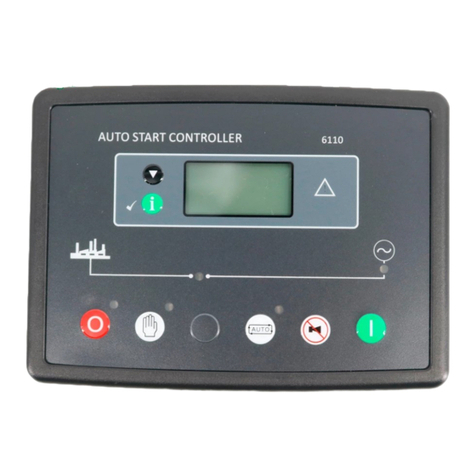
DEEP SEA ELECTRONICS
DEEP SEA ELECTRONICS 6110 User manual
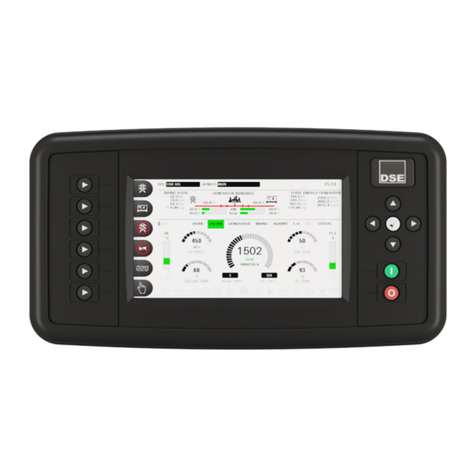
DEEP SEA ELECTRONICS
DEEP SEA ELECTRONICS DSE8910 User manual
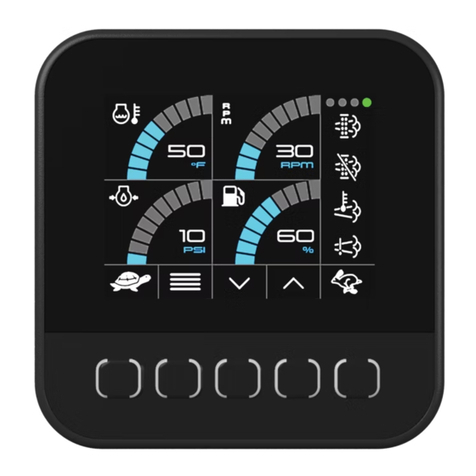
DEEP SEA ELECTRONICS
DEEP SEA ELECTRONICS DSEControl DSEE050 User manual
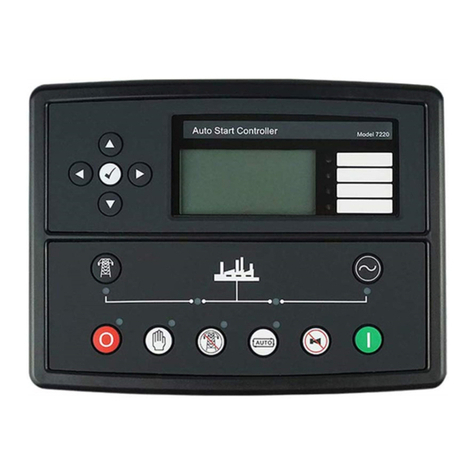
DEEP SEA ELECTRONICS
DEEP SEA ELECTRONICS DSECONTROL DSE7000 Series User manual
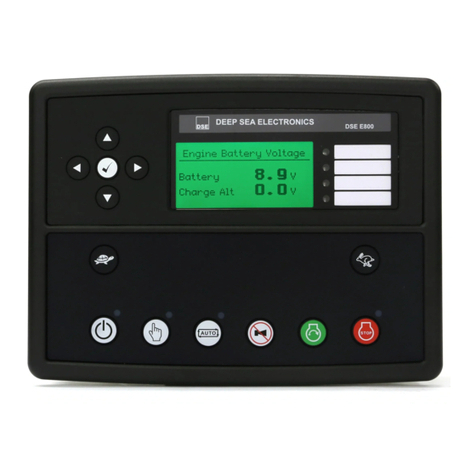
DEEP SEA ELECTRONICS
DEEP SEA ELECTRONICS DSEE800 User manual

DEEP SEA ELECTRONICS
DEEP SEA ELECTRONICS DSE8910 User manual
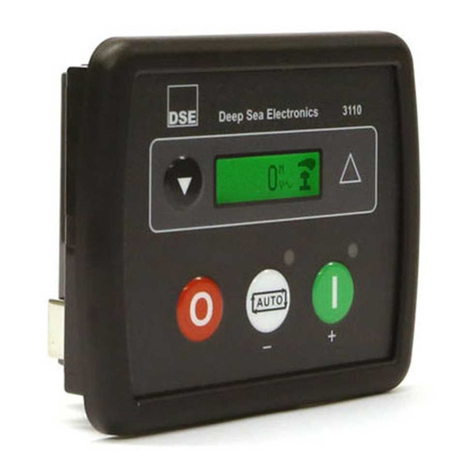
DEEP SEA ELECTRONICS
DEEP SEA ELECTRONICS DSEGenset DSE3110 User manual

